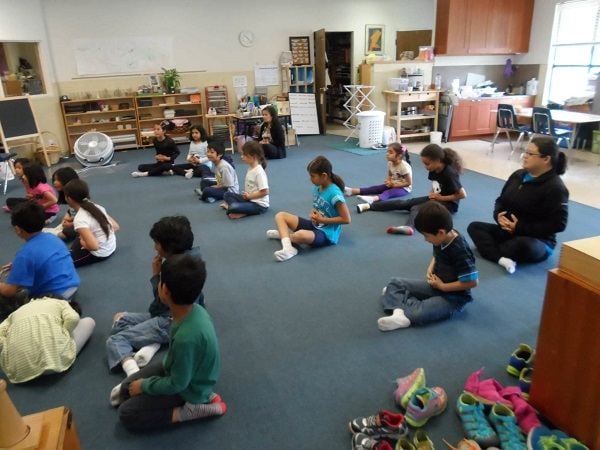In the classroom and at home, the adults in a child’s life play a vital role in education. The Montessori environment positions adults as a guide for children to draw upon for information, guidance, and resources that promote learning. Their role is not to force the child to conform to preconceived ideas, but to provide necessary materials and help the child discover methods or activities that nurture learning and development.
Practice, Consistency, and Motivation
The role of the adult can be summed up using the 3 key components of the adult-child relationship. Far from being an authoritarian role, it is more supportive than dictatorial. The components are simple ones:
- Practice – Give the child ample opportunity to experiment with ideas and practice skills. Think of this as allowing children to review and reaffirm past lessons rather than rushing them from one milestone to the next.
- Consistency – Establish and stick to a consistent plan. This does not mean that a rigorous schedule is necessary – it means that the there needs to be regularity in the learning environment.
- Motivation – This is arguably the most important part of Montessori learning. Children who receive encouragement and support are more enthusiastic about learning and experiencing new things. Motivation builds self-confidence, and that promotes moving forward.
Planning and Support
For the child, a seamless environment is preferable to a chaotic one. Adults, whether they are parents or teachers, need to provide the planning necessary for smooth transitions throughout the day, week, and the years to come. This includes having the materials available for course studies, and providing the encouragement and support which merges one lesson or activity into the next. Give children the freedom to move from one activity to the next by making sure the choices are available to them when they are ready.
Preparation and Guidance
Many of the responsibilities of the adult take place behind the scenes. Planning and preparation are invisible guidelines in the classroom which allow smooth transitioning and freedom to move about the classroom. As a guide, your encouragement and participation are as important as the preparation. This includes discussing how the child is progressing, offering suggestions on how to solve problems, and maintaining a comfortable atmosphere.
Emotional and Intellectual Interaction
In order for a child to excel, they need to be comfortable, both emotionally and intellectually. It is more practical to help a child understand their feelings than to simply dictate why they should react a certain way. This helps put emotional reactions and intellectual understandings on par and gives the child a framework to build on. An adult is needed to help the child understand their feelings and pursue their understandings rather than dictating how one should behave and what they must learn.
Montessori education recognizes that adults play a key role in a child’s education. At the Montessori School of Flagstaff Westside Campus, our teachers work with parents and guardians, assisting them with the continuation of Montessori learning outside of school. If you are looking for more ways to get involved with your child’s education, contact us today to learn ways to play an active role in your child’s daily learning.


